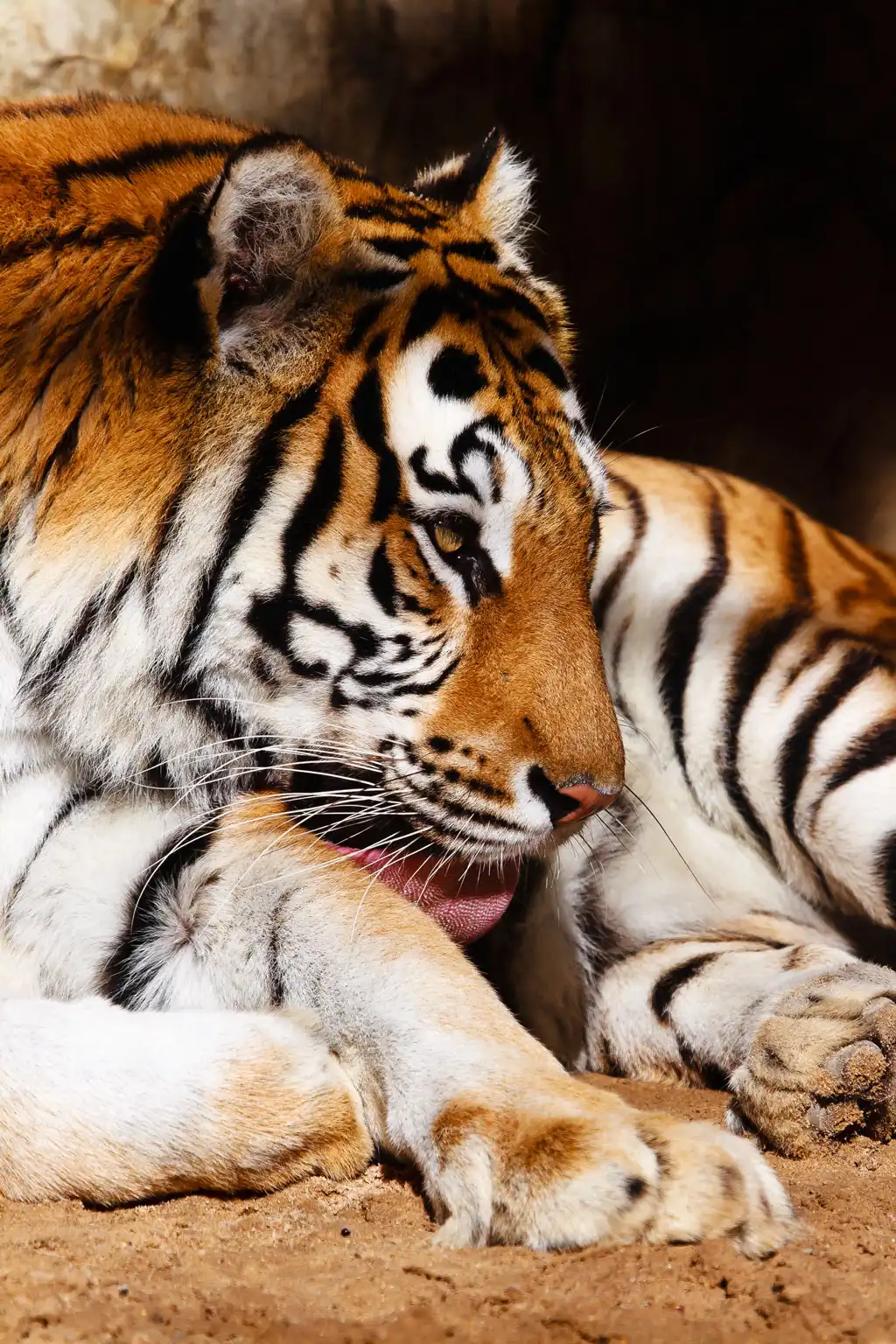Tigers, the majestic creatures of the wild, have always been a subject of fascination for many. Their powerful build, striking appearance, and mysterious behavior have made them a popular topic of study among wildlife enthusiasts and researchers alike. One of the most intriguing aspects of their life cycle is their mating behavior. In this article, we delve deep into understanding when and how tigers mate, the rituals involved, and the significance of their mating patterns.

Key Takeaways:
- Tigers usually mate during the cooler months.
- The mating process involves a series of rituals and vocalizations.
- Female tigers go into estrus, which is the period when they are receptive to mating.
- Mating can occur multiple times during the estrus period.
- After mating, the gestation period for tigers is approximately 3.5 months.
Mating Season: When Do Tigers Mate?
Tigers typically mate during the cooler months. The exact timing can vary based on the region and specific subspecies of the tiger. For instance, the Siberian tiger, which resides in colder climates, might have a slightly different mating season than the Bengal tiger found in the tropical forests of India.

Why the Cooler Months?
The cooler months are preferable for mating because it ensures that the cubs are born during a time when the weather is mild, and prey is abundant. This increases the chances of survival for the young ones.
The Mating Ritual
Tigers have a unique mating ritual that is characterized by a series of vocalizations, chuffing, and physical interactions. The male tiger will often follow the female, vocalizing and sending clear signals of his intentions.
https://www.youtube.com/watch?v=EhCcauk7hVY
Vocalizations and Chuffing
Before mating, tigers engage in a series of roars and chuffs. Chuffing, a less-known vocalization, is a friendly greeting among tigers. It sounds like a sneeze and is often accompanied by the tiger closing its eyes, a sign of trust and affection.
Physical Interactions
The male tiger will often nuzzle the female's neck, and they might engage in playful behavior. This is a crucial part of the courtship process and helps in establishing trust between the two tigers.
Estrus Cycle in Female Tigers
Female tigers go into estrus, which is the period when they are receptive to mating. This period lasts for about 3 to 7 days. During this time, the female will leave scent markings to attract potential mates. She will also vocalize more frequently, signaling her readiness to mate.

https://youtube.com/watch?v=O0dzKOvwjfE
Multiple Mating Sessions
It's not uncommon for tigers to mate multiple times during the estrus period. This increases the chances of fertilization. After mating, the female will often roll on her back, a behavior believed to assist in the fertilization process.
Post Mating and Gestation
After the mating process, the female tiger will go through a gestation period of approximately 104 to 106 days, roughly 3.5 months. During this time, she will seek out a safe and secluded spot to give birth. The number of cubs can vary, but typically a tigress will give birth to 2 to 3 cubs.
https://youtube.com/watch?v=FhNCcsjaToI
Significance of Mating Patterns
The mating patterns of tigers play a crucial role in ensuring the survival of the species. With the declining numbers of tigers in the wild, understanding their mating behavior can provide insights into conservation efforts. By protecting their natural habitats and ensuring a stable prey base, we can help in increasing the chances of successful mating and the survival of the cubs.
Frequently Asked Questions (FAQs) about Tiger Mating
1. At what age do tigers reach sexual maturity?
Tigers reach sexual maturity between 3 and 5 years of age. Specifically, females mature at around 3 or 4 years, while males mature slightly later, between 4 to 5 years.
2. How often do tigers mate?
Mating can occur at any time of the year. However, in regions with tropical climates, it happens more frequently between November and April, when temperatures are cooler. Tigers living in temperate zones tend to mate only during the winter months.

3. How do tigers communicate their readiness to mate?
Before entering heat, female tigers mark their territory with urine that emits a distinct smell. Once in heat, they communicate their readiness to males through frequent and repetitive vocalizations, which include roars, moans, and other odorous excretions.
https://youtube.com/watch?v=Z6q5oOyB5lQ
4. How long is the gestation period for tigers?
After conception, the gestation period for tigers lasts approximately 3 to 3.5 months, translating to about 93-112 days.
5. How many cubs are typically born at once?
The size of a tiger litter is usually 2 or 3 cubs. However, in some cases, a tigress can give birth to up to 7 cubs.
6. Are male tigers involved in raising the cubs?
No, male tigers do not usually provide parental care. The responsibility of caring for the offspring, feeding them, and teaching them to hunt falls solely on the tigress.
7. Why is the mortality rate high for young tigers?
The mortality rate for young tigers is extremely high, with less than half surviving their first two years. They may fall victim to male tigers, face food scarcity, or be killed by other predators if the mother is not around.

Additional Insights on Tiger Mating
Tigers have a unique courtship ritual. When a receptive tigress and a tiger meet, they perform a courtship ritual by moving in circles and vocalizing. Both growl and approach and separate successively in a process of mutual recognition and trust-building. The act of mating is short but repeated several times during the estrus period.
https://www.youtube.com/watch?v=O0dzKOvwjfE
For the tigress, copulation can be painful due to the male's penis having spike-like structures. However, this process induces ovulation, increasing the chances of fertilization. It's common for a healthy male tiger to mate with several different females throughout his lifetime.
After mating, tigresses find a den where they will give birth. The cubs are born blind and are entirely dependent on their mother. They remain in the den until they are about eight weeks old. Male tigers sometimes attempt to kill the cubs if they come into contact with them, as this behavior ensures the female will be ready to mate again.





